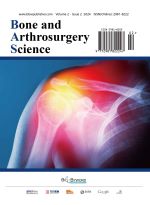Abstract
In the past two decades, significant progress has been made in the biomaterials field aimed at developing calcified tissues and facilitating tissue regeneration. The increasing demand for innovative biomaterials capable of replacing damaged tissues, enhancing the body’s regenerative capacity, and promoting efficient calcification in hard tissues is primarily motivated by the rising number of elderly individuals afflicted with age-related ailments. Bioceramics, such as calcium phosphates, bioactive glasses, and glass ceramics, exhibit considerable potential in closely mimicking the structure of original calcified tissues when constructing scaffolds for repairing, restoring, reconstructing, or regenerating diseased body parts. These biomaterials have shown promising applications in calcified tissue engineering in recent years. This review covers the fundamental requirements of bioceramics for biomedical purposes and provides an extensive examination of the latest developments in bioceramics and composites, encompassing tissue engineering and drug delivery. The review concludes by underscoring the need for future research endeavors, particularly in the realm of fabricating scaffolds for tissue engineering utilizing nanotechnology.
References
Peppas N, Langer R, 1994, New Challenges in Biomaterials. Science, 263(5154): 1715–1720. http://doi.org/10.1126/science.8134835
Sáenz A, Rivera E, Brostow W, et al., 1999, Ceramic Biomaterials: An Introductory Overview. Journal of Materials Education, 21(5/6): 267–276.
Williams DF, 1999, Williams Dictionary of Biomaterials, Liverpool University Press, Liverpool, UK.
Rohan, 2016, Biomaterials Market Worth USD 149.17 Billion by 2021, viewed February 13, 2024, http://www.marketsandmarkets.com/PressReleases/global-biomaterials.asp
Coburn JC, Pandit A, 2007, Development of Naturally-Derived Biomaterials and Optimisation of Their Biomechanical Properties, in Ashammakhi N, Reis R, Chiellini E, (eds.), Topics in Tissue Engineering, Vol. 3, Oulu University, Finland.
Lee CH, Singla A, Lee Y, 2001, Biomedical Applications of Collagen. International Journal of Pharmaceutics, 221(1–2): 1–22.
Liao YH, Jones SA, Forbes B, et al., 2005, Hyaluronan: Pharmaceutical Characterization and Drug Delivery. Drug Delivery, 12(6): 327–342.
Lippiello L, 2003, Glucosamine and Chondroitin Sulfate: Biological Response Modifiers of Chondrocytes Under Simulated Conditions of Joint Stress. Osteoarthritis and cartilage, 11(5): 335–342.
McGregor DB, Baan RA, Partensky C, et al., 2000, Evaluation of the Carcinogenic Risks to Humans Associated with Surgical Implants and Other Foreign Bodies—A Report of an IARC Monographs Programme Meeting. European Journal of Cancer, 36(3): 307–313. http://dx.doi.org/10.1016/S0959-8049(99)00312-3
Holzapfel BM, Reichert JC, Schantz JT, et al., 2013, How Smart Do Biomaterials Need To Be? A Translational Science and Clinical Point of View. Advanced Drug Delivery Reviews, 65(4): 581–603. https://doi.org/10.1016/j.addr.2012.07.009
Sumner DR, Turner TM, Igloria R, et al., 1998, Functional Adaptation and Ingrowth of Bone Vary as a Function of Hip Implant Stiffness. Journal of Biomechanics, 31(10): 909–917. https://doi.org/10.1016/S0021-9290(98)00096-7
Geetha M, Singh AK, Asokamani R, et al., 2009, Ti Based Biomaterials, the Ultimate Choice for Orthopaedic Implants–A Review. Progress in Materials Science, 54(3): 397–425. https://doi.org/10.1016/j.pmatsci.2008.06.004
Eisenbarth E, Velten D, Müller M, et al., 2004, Biocompatibility of ?-Stabilizing Elements of Titanium Alloys. Biomaterials, 25(26): 5705–5713. https://doi.org/10.1016/j.biomaterials.2004.01.021
Nair LS, Laurencin CT, 2006, Polymers as Biomaterials for Tissue Engineering and Controlled Drug Delivery, in Lee K, Kaplan D, (eds.), Tissue Engineering I, Springer Berlin Heidelberg, Berlin, Heidelberg, 47–90.
Rezwan K, Chen QZ, Blaker JJ, et al., 2006, Biodegradable and Bioactive Porous Polymer/Inorganic Composite Scaffolds for Bone Tissue Engineering. Biomaterials, 27(18): 3413–3431. https://doi.org/10.1016/j.biomaterials.2006.01.039
Park JB, Lakes RS, 2007, Composites as Biomaterials, in Biomaterials, Springer New York, New York, NY, 207–224.
El-Meliegy E, Van Noort R, 2011, Glasses and Glass Ceramics for Medical Applications, Springer, New York, NY.
Ducheyne P, Radin S, King L, 1993, The Effect of Calcium Phosphate Ceramic Composition and Structure on In Vitro Behavior. I. Dissolution. Journal of Biomedical Materials Research, 27(1): 25–34. https://doi.org/10.1002/jbm.820270105
Barrère F, Mahmood TA, de Groot K, et al., 2008, Advanced Biomaterials for Skeletal Tissue Regeneration: Instructive and Smart Functions. Materials Science and Engineering: R: Reports, 59(1): 38–71. http://dx.doi.org/10.1016/j.mser.2007.12.001
